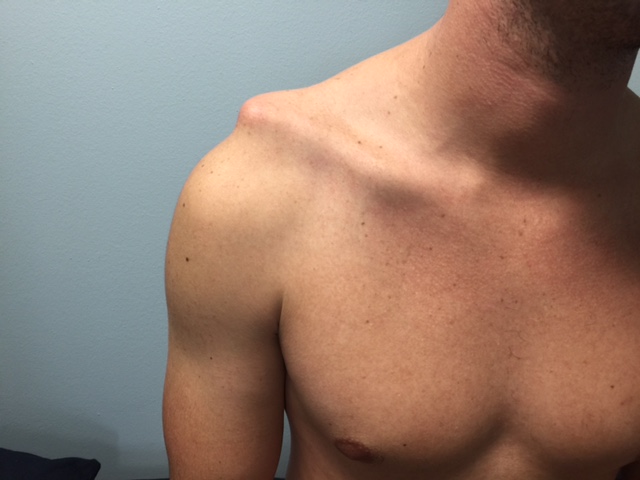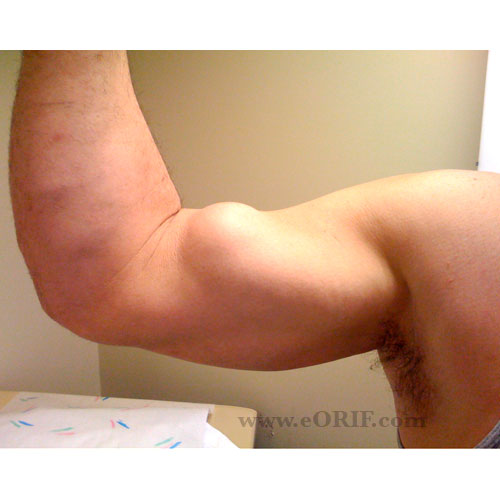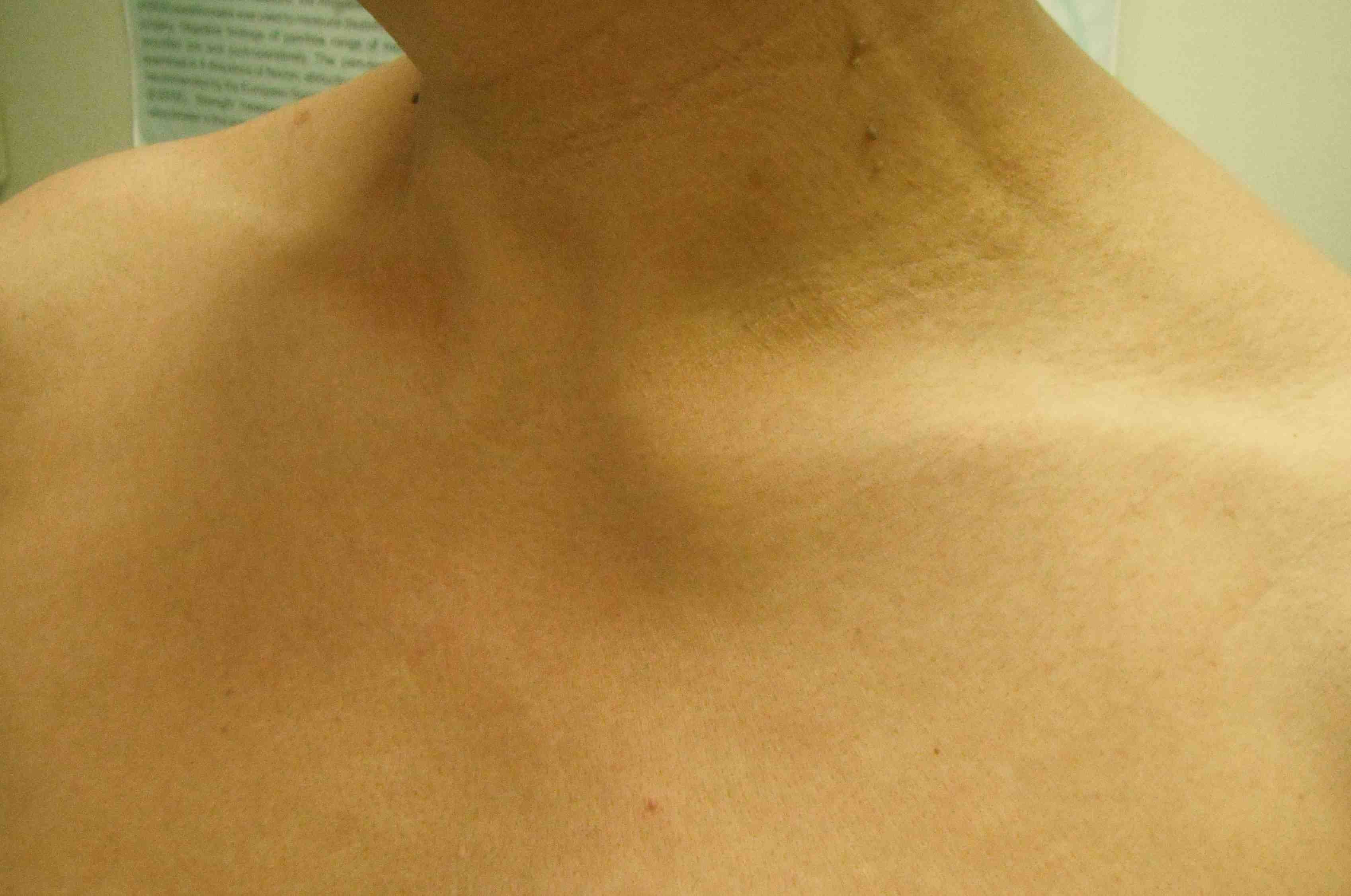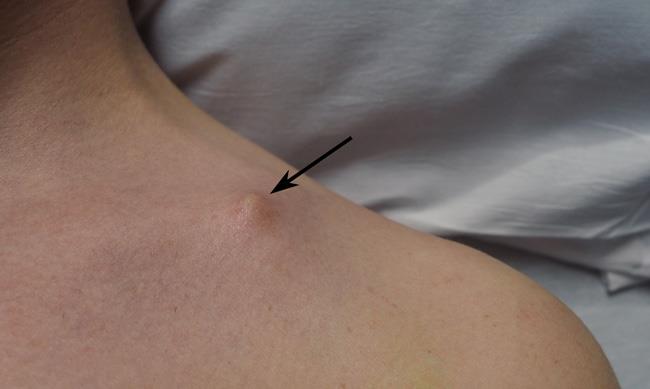Shoulder & Upper Arm
- If a mechanism or pattern:
- When did it happen?
- What happened exactly? Try to understand the mechanism and forces involved (if present)
- What symptoms initially?
- Where were the symptoms initially?
- Describe pain – sharp / superficial / deep / ache / burning etc
- What aggravates and what eases?
- For LL problems, include ability to WB
- What symptoms now?
- Have the symptoms changed? Better / Worse? Location?
- If no mechanism
- How long has it been there?
- Is there anything that they believe may have contributed to the development of the problem? Recent activity / inactivity
- What symptoms are present?
- Are they there all the time?
- What treatment has been sought so far?
- Assessment
- Investigations
- If imaging, do they have it with them?
- If not, can we view it?
- Private providers use online applications
- If in another public hospital in Victoria, then can use the “Synapse Mix” service to get the images temporarily put on local network diagnostic imaging servers.
- What management has been undertaken? Has it been effective
- Splinting
- Ice
- Medications
- History of problems in that area before
- When?
- How was it managed?
- Assessment undertaken?
- Investigations
- Medications
- Any ongoing problems?
- Any associated symptoms (if a non mechanical cause or if at all suspicious)
- Recent illness / fevers / sweats
- Recent overseas / long haul travel / immobilisation (eg for suspected DVT)
- Loss of appetite / loss of weight, etc
- If has a wound
- Tetanus status
- If potentially needing procedural sedation or surgery (and consider this for anyone you are contemplating an x-ray for)
- Fasting status (and tell them not to eat and drink until you tell them it is ok to do so)
Goals in ED
Observation
AROM
Palpation
Special tests
Imaging
- Normal distal neurovascular function
- No fractures
- No dislocation
- GH jt
- SC jt – not to be missed (potentially deadly)
- No tendon injury that may require URGENT repair
Observation
- Radial pulse
- Median, Radial, Ulnar, Axillary nerve function
- Rock, Paper, Scissors, OK
AROM
- Flexion / Extension
- Abduction
- Hand Behind Back
- Horizontal flexion
- Internal and External Rotation
Palpation
- Bones / Joints
- Palpate entire length of clavicle from SC jt to AC jt
- SC jt
- AC jt
- Scapula
- Upper chest
- Proximal Humerus down to elbow
- Muscles
- Biceps (anterior)
- Triceps (posterior)
- Rotator cuff
Special tests
- Resisted
- Empty Can / Full Can
- Speed’s Test
- Jergason’s Test
- Elbow flexion
- Elbow extension
- Shoulder ER /IR
- Passive
- Impingement
- Labral tests
- Compression / rotation
- Stability Tests
- Apprehension
- Augmentation
- Relocation
Imaging
- X-ray
- Clavicle
- AC jt
- GH jt
- Humerus
- CXR as well if has upper chest pain
- CT
- If SC joint injury is suspected, X-ray alone is inadequate
- Ultrasound
- Generally not indicated in ED for most shoulder problems
- Suspected rotator cuff tears don’t need urgent imaging in ED
- If older, probably don’t need imaging at all as doesn’t really change Mx
- If younger, can often get ultrasound quicker via GP
- Suspected Biceps or Triceps tendon tear
- Discuss with Ortho
Shoulder Stability Tests
Technique
- Support arm in 90-120 degrees of abduction and stabilise the scapula with the other hand
- Draw the humeral head anteriorly
- Increased anterior translation indicates anterior instability (90%)
Technique
- Patient in supine
- Hold the patient's forearm with one hand and place into 80-120 degrees of abduction and 20-30 degrees of flexion, with the elbow flexed to 120 degrees
- The other hand prevents the scapula from moving (fingers on the scapula spine, thumb lateral to the coracoid)
- The arm is flexed to 60-80 degrees while the thumb of the other hand attempts to subluxate the humeral head anteriorly.
- In a positive test, the thumb is felt to slide past the coracoid process, indicating posterior instability
All components of this test are completed with the shoulder abducted to 90 degrees
Apprehension Test
Apprehension Test
- Externally rotate the shoulder
- If no feeling of instability, proceed to Augmentation
- If feeling of instability (patient feels like shoulder will dislocate, does not allow therapist to put shoulder in position due to this feeling), proceed to Relocation Sign
- In the apprehension position, apply postero-anterior pressure to the humeral head
- If feeling of instability, proceed to Relocation Sign
- In the apprehension position, apply anteroposterior pressure to the humeral head
- Relocation Sign is positive if there is increased feeling of STABILITY
- If the patient has feeling of instability in the apprehension or Augmentation positions, which is improved with the Relocation sign, then this is indicative of anterior shoulder instability
Technique
- Patient standing or sitting relaxed
- Apply longitudinal traction to the shoulder
- If a sulcus (gap) > 2cm develops beneath the acromion, the patient is highly likely to have multidirectional instability
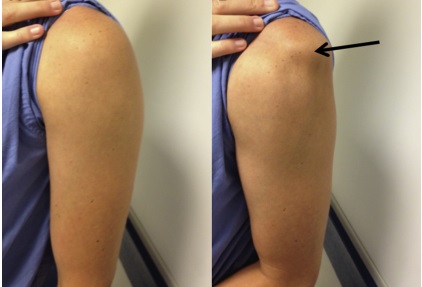
Shoulder Impingement Tests
Mechanism
- Forces the greater tuberosity against the anterior acromion
- Rotates the posterior rotator cuff tendons under the acromion (infraspinatus, teres minor)
- Flex the shoulder to 180 degrees, with the elbow flexed to 90 degrees
- Apply pressure at AC joint
- Internally rotate arm
- Assess pain both with and without AC jt pressure
- Pain suggests shoulder impingement of the posterior cuff
Mechanism
- Impales tendons against the coracoacromial arch
- In internal rotation = supraspinatus, teres minor, infraspinatus
- In external rotation = subscapularis
- With the patient in sitting and their shoulder in 90 degrees of flexion, keep the elbow flexed to 90 degrees and support the arm to allow maximal relaxation
- Stabilise with one hand proximal to the elbow and use your outside hand to hold just proximal to the wrist
- Move the shoulder into internal rotation
- Pain suggests shoulder impingement (an action, not a pathology ie what is actually causing the impingement - inflamed tendons / bursa / poor mechanics)
Mechanism
- Impales the tendons against the coracoacromial arch:
- In Internal Rotation = Supraspinatus, Teres Minor, Infraspinatus
- In External Rotation = Subscapularis
- Internal Rotation
- Flex the elbow to 90 degrees and hold the shoulder into internal rotation
- Abduct the shoulder passively
- External Rotation
- With the elbow at 90 degrees and the shoulder in internal rotation / abducted position, stabilise the scapula with one hand to prevent movement and then externally rotate the shoulder
- Pain suggests shoulder impingement (an action, not a pathology; need to decide what is causing the impingement - inflamed tendons / bursa, poor mechanics, etc)
Shoulder Tendon Integrity Testing
Technique
- Starting Position (both tests)
- Hold arms in 90 degrees of abduction, and then horizontally flex 30 degrees
- Empty Can
- Ask the patient to hold the shoulder in full internal rotation, with the wrists pronated as if emptying cans
- Resist the patient's attempt to maintain this position
- Full Can
- Hold wrists in mid prone (thumb up) as if holding a can upright
- Resist the patient's attempt to maintain this position
- Arm weakness may be more specific to supraspinatus dysfunction
- Pain is not as specific and may just represent dysfunction / tendinopathy
- This test alone is not enough to conclusively determine if a patient has a rotator cuff tear or not
Internal Rotators (Subscapularis / Pectoralis Major / Anterior Deltoid)
Technique 1: Tennis Forehand
External Rotators (Supraspinatus / Infraspinatus / Teres Minor / Posterior Deltoid)
Technique: Tennis Backhand
Grading (All the above)
Technique 1: Tennis Forehand
- Start with the elbow tucked into the side, with the elbow flexed to 90 degrees
- Resist the patient's attempt to internally rotate the humerus
- Start with the patient's hand behind their back (for a lot of people with shoulder pain, this position is not possible, or already provocative)
- Ask the patient to move their hand away from their back and resist
External Rotators (Supraspinatus / Infraspinatus / Teres Minor / Posterior Deltoid)
Technique: Tennis Backhand
- Start with the elbow tucked in to the side, with the elbow flexed to 90 degrees
- Resist the patient's attempt to externally rotate the humerus
Grading (All the above)
- Compare to unaffected side to grade "normal" power out of 5 and comment on if painful or not
- These tests alone are not able to provide conclusive evidence of a cuff tear, but in conjunction with other tests, may assist in the diagnosis of a tear or tendinopathy
Technique
- The elbow is flexed to 90 degrees and the forearm pronated
- The examiner hold the patient's wrist to resist active supination
- With their other hand, the examiner should palpate over the long head of biceps in the bicipital groove
- Pain in the bicipital groove may indicate proximal biceps or transverse humeral ligament injury
- It may also be possible to palpate that the biceps tendon subluxes in the bicipital groove
Technique
- Shoulder externally rotated, elbows fully extended with the forearms supinated
- Resist the patient's attempt to flex the shoulders in this position
- Pain (or weakness) with this test is likely to indicate biceps pathology or possibly a labral tear (the long head of biceps brachii has an attachment to the labrum)
Technique
- Patient (or therapist) abducts arm to 90 degrees
- Patient tries to slowly lower arm
- Positive test if arm drops to side quickly and not smoothly
- Gentle tap over abducted arm may force arm to give way
- A Positive test could be due to a variety of factors - cuff tear, other shoulder trauma (sensitivity poor)
- Only 5-10% (in one study in was only 2%) of people with a NEGATIVE drop arm sign will have a cuff tear
- Always use in conjunction with other tests / assessment
Elbow Flexors (Brachialis, Biceps Brachii)
Technique
Elbow Extensors (Triceps Brachii)
Technique
Technique
- Start with the arm at the side, with the elbow flexed to 90 degrees
- Resist the patient's attempt to flex the elbow
- Look for bunching of biceps muscle belly or altered contour of either the upper arm or elbow (may even be evident at rest) which likely indicates rupture of the biceps tendon - try to ascertain if it is proximally, or distally (location of pain / tenderness)
- Grade power compared with other side out of 5 and note presence of pain on testing
Elbow Extensors (Triceps Brachii)
Technique
- Start with arm at side, with the elbow flexed to 90 degrees
- Resist the patient's attempt to extend the elbow
- Weakness or inability to actively extend the elbow, coupled with pain / tenderness in the region of the triceps tendon indicates damage to the triceps tendon (tendinopathy / tear / rupture)
Shoulder Internal Derangement Testing
Technique
- In the sitting position, hold the scapula with one arm
- Abduct the shoulder 90 degrees and internally rotate 90 degrees
- Apply an axial compressive force through the elbow and then apply a horizontal adduction movement
- Sharp pain with or without a clunk / click indicates a positive test
- For posteroinferior labral lesions, there is a sensitivity or 73% and specificity of 98%
- When combined with a positive Kim test, there is 97% sensitivity for posteroinferior labral lesions.
Technique
- In the sitting position, hold the scapula with one arm and abduct the shoulder 90 degrees
- The examiner holds the elbow and the lateral aspect of the proximal arm and provides simultaneous axial loading and 45 degree of upward diagonal elevation force on the distal arm, while inferior and posterior force is applied on the proximal arm
- Sharp pain with or without a clunk indicates a positive test
- For posteroinferior labral lesions, the Kim test has a sensitivity of 80% and specificity of 94%
- When combined with a positive Jerk test, there is a 97% sensitivity for posteroinferior labral lesions.
Technique
- The shoulder is passively abducted to 90 degrees and slowly internally rotated with a simultaneous gentle axial compressive force applied
- Pain may indicate a SLAP lesion
Technique
- Hold the shoulder in 90 degrees of flexion, 30-45 degrees of horizontal flexion and maximal internal rotation (thumb down)
- The examiner holds the patient's wrist and resists the patient's attempt to forward flex the shoulder
- The test is repeated in external rotation (palm up)
- Pain or clicking deep in the glenohumeral joint with the thumb down, that is relieved with the palm up may indicate a SLAP lesion
- Pain in the AC joint region is likely to be from the AC joint
Technique
- With the elbow extended and the shoulder internally rotated (thumb down), horizontally flex the shoulder
- Repeat with the arm in external rotation (thumb up)
- Sharp pain with or without a clunk / click indicates a positive test, possible indicative of a labral tear or internal derangement
Other Shoulder Tests
Technique
- Passively horizontally flex (or adduct) arm across front of chest (take elbow towards opposite shoulder in the plane of the clavicle)
- Pain indicates a positive test
- Differentiates AC / SC joint pathology from shoulder impingement
- Horizontal flexion may also be limited by posterior cuff tightness

